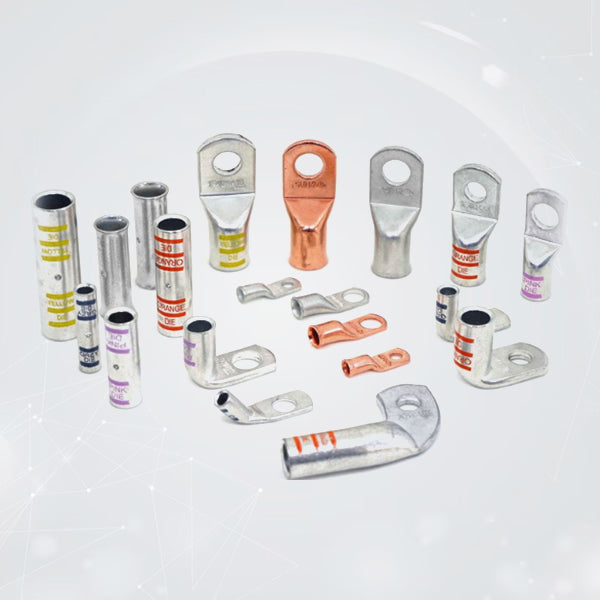
Can Marine Battery Connectors Be Used in Off-Grid Solar Systems?
When building or upgrading an off-grid solar system, every component matters—from the panels on your roof to the smallest terminal connecting your batteries. One component that’s often overlooked (but critically important) is the battery connector.
This raises a smart question:
Can marine battery connectors be used in off-grid solar systems?
The short answer: Absolutely. In fact, using marine battery lugs and marine-grade heavy-duty lugs in solar setups can offer significant advantages, especially in challenging outdoor environments.
Let’s dive into why these components—originally engineered for boats—may be exactly what your solar system needs to run more efficiently, safely, and reliably for years to come.
What Are Marine Battery Connectors?
Marine battery connectors include terminal lugs, battery posts, and cable ends that are designed specifically for marine applications. They are typically:
- Constructed from high-conductivity copper
- Coated with tin plating to resist corrosion
- Built for vibration resistance and moisture protection
- Compatible with crimp or solder installation
These connectors are designed to endure the extreme conditions found at sea—saltwater, humidity, engine vibrations, and constant temperature shifts. This makes them incredibly tough, durable, and dependable in other challenging environments too… like an off-grid solar system.
🔗 Explore SELTERM’s Marine Battery Cable Lugs
What Makes Marine Grade Lugs Ideal for Solar?
Off-grid solar systems often live in remote or rugged environments. Whether it’s a cabin in the mountains, a desert homestead, or a backup system in a humid shed, your system will be exposed to nature’s elements. That’s where marine battery terminals shine.
Benefits of Using Marine Battery Lugs in Solar Systems:
✅ Corrosion Resistance:
Tinned copper coating prevents oxidation from moisture, rain, or high humidity—common in both marine and outdoor solar environments.
✅ High Conductivity:
Copper ensures excellent electrical flow, essential for transferring power from solar batteries to inverters or DC loads.
✅ Longevity in Harsh Conditions:
These lugs are built to last in environments where typical automotive or household connectors would degrade.
✅ Durable Under Vibration:
If your solar system is mobile (e.g., in an RV or off-grid van), vibration resistance becomes critical to avoid loose or damaged connections.
✅ Compatible with Heat Shrink Protection:
Combine marine-grade lugs with adhesive-lined heat shrink tubing for a watertight, vibration-proof seal.
Use Cases: When Marine Battery Terminals Make Sense in Solar
Not all solar systems are created equal. Some sit indoors and enjoy mild conditions, while others are exposed to the elements year-round. Here’s when using marine battery connectors is a smart move:
1. Remote Cabins or Sheds
Outdoor solar battery banks exposed to temperature changes, dust, and moisture benefit from the sealed protection of marine-grade lugs.
2. RV or Vanlife Systems
These mobile systems endure constant movement and need vibration-resistant connections that won’t work loose or corrode over time.
3. Tropical or Coastal Solar Installations
If your system is near the ocean or in a high-humidity climate, marine battery lugs provide much-needed corrosion resistance.
4. Backup Systems in Non-Climate-Controlled Spaces
Battery banks in garages, barns, or outdoor enclosures can face moisture and temperature swings—conditions marine-grade connectors are made for.
How to Properly Use Marine Battery Lugs in a Solar Setup
To get the most out of marine-grade heavy-duty lugs, you’ll want to follow some best practices to ensure long-lasting performance.
✔ Choose the Right Size
- Match the lug barrel to your cable size (e.g., 4 AWG, 2 AWG, etc.)
- Match the stud hole to the terminal post or bus bar it connects to
✔ Use the Proper Crimping Tool
A heavy-duty hex or indent crimper ensures a secure, low-resistance bond between the wire and lug.
✔ Add Heat Shrink for Extra Protection
Adhesive-lined heat shrink tubing seals out water and adds mechanical reinforcement. It also helps keep your connections insulated and safe.
✔ Torque to Manufacturer Specs
Over- or under-tightening lug bolts can create weak points in your circuit. Use a torque wrench for reliable results.
Why Choose SELTERM Marine Battery Lugs?
When reliability and longevity matter—especially in off-grid solar or demanding outdoor applications—marine grade heavy-duty lugs from SELTERM are a top-tier choice. These lugs are designed not just for boats but for any high-vibration, moisture-prone, or corrosion-heavy environment, including solar arrays, RVs, and remote battery banks.
What sets them apart?
- Built from 99.9% oxygen-free copper for superior conductivity
- Coated in electro-tinned plating to fight corrosion and extend lifespan
- Precision-engineered to handle high-current loads and harsh conditions
- Designed for easy installation with crimp or solder connections
- Fully compliant with UL and RoHS standards
Whether you’re wiring a solar battery bank in the mountains or powering an off-grid tiny home by the sea, marine grade heavy-duty lugs deliver the rugged reliability your system demands.
🔗 Browse SELTERM Marine-Grade Battery Lugs
Final Thoughts
So, can marine battery connectors be used in off-grid solar systems?
Yes - and they’re often the better choice. These components, built to endure the punishing marine environment, bring valuable benefits like corrosion resistance, high conductivity, and rugged durability to solar applications—especially those exposed to moisture, movement, or extreme temperatures.
In other words, what works on the water can definitely work in the wild.
If you're serious about building a solar system that’s built to last, it’s time to level up from basic connectors and start using marine grade heavy-duty lugs.

